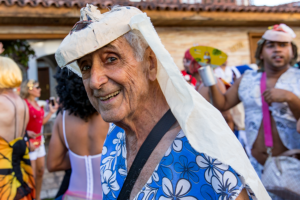Another winner from the Top 100 – Every year, Green Destinations organizes the Top 100 Destination Sustainability Stories competition, which invites submissions from around the world – a vetted collection of stories spotlighting local and regional destinations that are making progress toward sustainable management of tourism and its impacts. From the winners announced this year, we’ve selected two more stories, this time from Brazil and Kyrgyzstan, that showcase different reasons for engaging the local community. Synopses by Ailin Fei. Top 100 submission by Camila Guedes – Tourism Board / Municipal Secretary of Tourism / Diamantina City Hall.

For decades, people have celebrated Diamantina’s carnival. However, in recent years, the carnival has evolved into a mass tourism event. Diamantina is a Brazilian municipality in the state of Minas Gerais with an estimated population of 47,825 people (2020 census). Diamantina’s carnival highlights cultural heritage with the potential to set an example for other cities, promoting tourism, local culture, income generation, and social inclusion.
About 10 years ago, the city of Diamantina noticed a decrease in visitors, so they “resurrected” the carnival through increasing cultural diversity prompted by a national initiative to change the carnival scene and embrace the traditional and historic values of Brazil, which altered the itineraries and tourist flows. Unfortunately, this reconfiguration led to an increased presence of low-budget tourists, intense overcrowding that provided no substantial financial benefits to the municipality, and structural issues such as disruption in water supply and pollution.

The carnival management launched the newest redesign of the carnival, entitled ‘Carnaval Radical,’ in 2020, which included curated space for adventure sports, increased gastronomy experiences, and raised awareness of attractions and traditional historical monuments, further diversifying the tourist profile, including family tourists. These strategies reduced mass tourism, included more locals in the carnival, alleviated pressure on urban services, and enriched the city’s culture, nature, and economic development.
Diamantina’s Carnival holds significant symbolic value and can serve as a model for Brazilian cities and any other city that faces challenges due to mass tourism and seeks to revitalize their own events in a sustainable manner.

